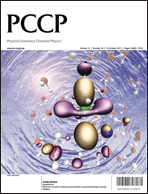The crystalline structure of transition-metals (TM) has been widely known for several decades, however, our knowledge on the atomic structure of TM clusters is still far from satisfactory, which compromises an atomistic understanding of the reactivity of TM clusters. For example, almost all density functional theory (DFT) calculations for TM clusters have been based on local (local density approximation—LDA) and semilocal (generalized gradient approximation—GGA) exchange-correlation functionals, however, it is well known that plain DFT fails to correct the self-interaction error, which affects the properties of several systems. To improve our basic understanding of the atomic and electronic properties of TM clusters, we report a DFT study within two nonlocal functionals, namely, the hybrid HSE (Heyd, Scuseria, and Ernzerhof) and GGA+U functionals, of the structural and electronic properties of the Co13, Rh13, and Hf13 clusters. For Co13 and Rh13, we found that improved exchange-correlation functionals decrease the stability of open structures such as the hexagonal bilayer (HBL) and double simple-cubic (DSC) compared with the compact icosahedron (ICO) structure, however, DFT-GGA, DFT-GGA+U, and DFT-HSE yield very similar results for Hf13. Thus, our results suggest that the DSC structure obtained by several plain DFT calculations for Rh13 can be improved by the use of improved functionals. Using the sd hybridization analysis, we found that a strong hybridization favors compact structures, and hence, a correct description of the sd hybridization is crucial for the relative energy stability. For example, the sd hybridization decreases for HBL and DSC and increases for ICO in the case of Co13 and Rh13, while for Hf13, the sd hybridization decreases for all configurations, and hence, it does not affect the relative stability among open and compact configurations.


 Please wait while we load your content...
Please wait while we load your content...